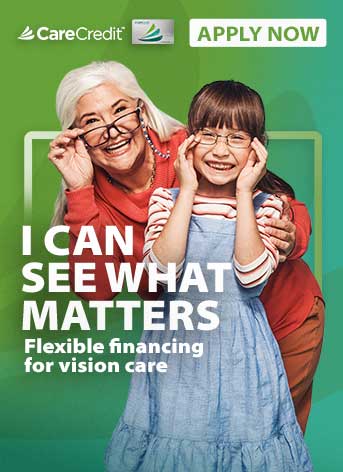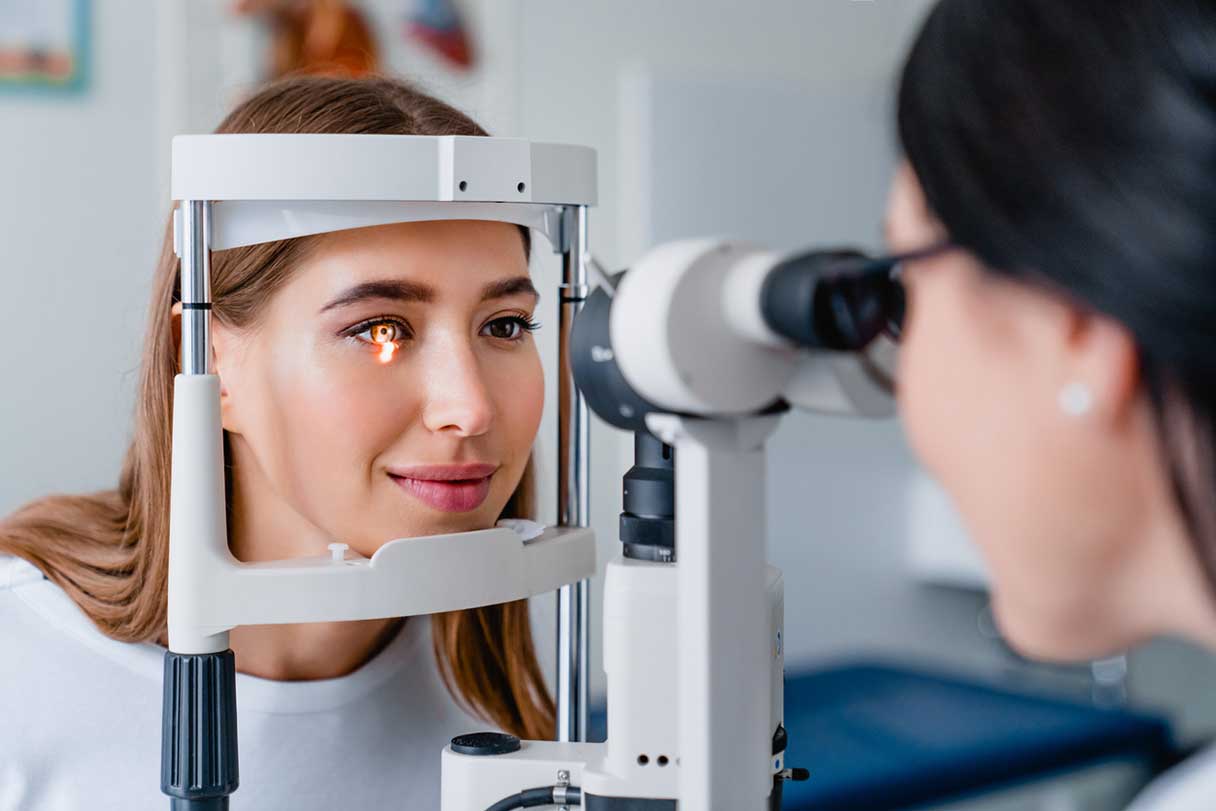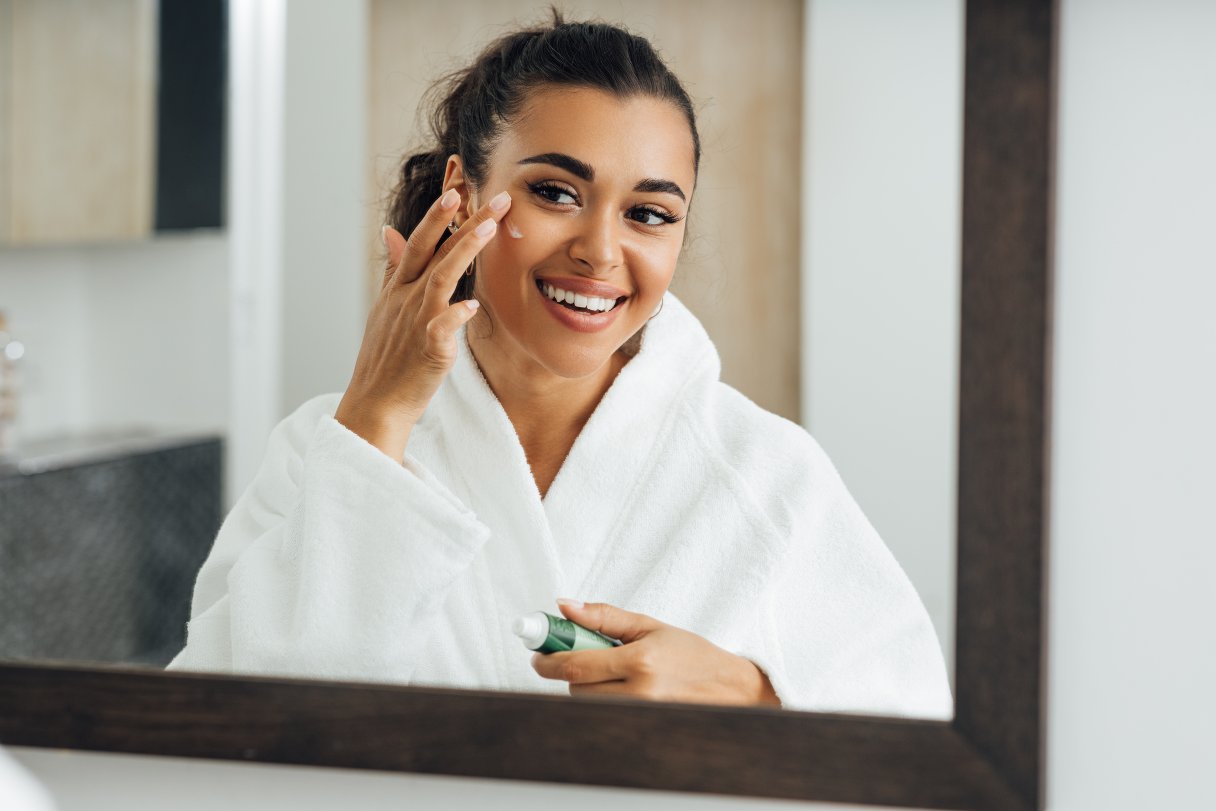Eyes may be the windows to the soul, but in reality, eyes do a lot more than that — especially for kids. Healthy eyes are important: for babies to recognize faces, colors and shapes; and in young children, clear vision is vital for hand-eye coordination and motor skill development. As kids get older, being able to see clearly is also a key component of doing well in school.1
A child's eyes go through a lot of change and development during their first 18 years, and many kids may not share if their vision is blurry or they are having difficulty seeing the whiteboard at school. Luckily, regular eye exams can help address any issues and ensure their eyes are healthy and developing normally.2
When To Schedule Your Child's Eye Exam
While newborn and well-baby eye screenings can provide a general assessment of vision, a child's first comprehensive eye exam should be performed between the ages of three and five years to check for visual acuity and alignment. Your pediatrician may recommend one sooner if there are concerns, symptoms or a family history of childhood eye disease.3
A comprehensive eye exam before five years old can help diagnose eye concerns such as lazy eye, crossed eyes or focusing problems that may benefit from corrective lenses. Addressing these eye issues early can help ensure they don't interfere with social and academic development.1
Once children are in school, they should have a comprehensive eye exam every two years, or annually if they wear glasses or contact lenses.1
What To Expect at a Child's Eye Exam
Since the procedures of an eye exam may be new for a child, try to schedule the appointment during a time when they are most likely to be awake and happy. Explaining to the child, and even role-playing what types of tests or procedures will be done, can help a child feel comfortable during an eye exam. You may want to bring a favorite comfort item to help the child feel more at ease, too.4
During the exam, the doctor will usually ask the parent questions about the child's health history, family eye history, birth weight and any concerns they have about their child's vision or eye health. Parents should share if their child has frequent eye infections, irritated or dry eyes, trouble tracking or delayed motor development.1
Then, the eye doctor will perform various tests and assessments to evaluate the health and development of the child's eyes. Which tests are used may depend on the child's age, specific eye concerns and the child's willingness to participate.
Types of Eye Tests for Children
While a vision screening can check for basic visual acuity, a comprehensive eye exam allows for a more thorough evaluation of the health and development of the eyes. A comprehensive eye exam performed by an ophthalmologist may include additional exams for refractive errors, alignment, eye diseases and more.5
Some tests that are more difficult to perform on children, such as an intraocular pressure test for glaucoma and dilation, may not be performed until a child is older or unless symptoms warrant the test.6
Visual acuity
An eye chart is used to check the sharpness of vision at different distances. Eyes are checked one at a time. In eye exams for young children, the chart may include pictures of common objects instead of letters.4
Eye alignment
Healthy eyes work as a team. A doctor may use an ocular motility test to gauge how well your child's eyes are tracking together. If your child has a lazy eye or crossed eyes, the eyes will not be working together and can cause vision problems that can interfere with development and learning.2
Eye muscles
A doctor may have a child follow a toy or a light to evaluate peripheral vision and check the eye muscles for weakness, control and coordination.7
Slit-lamp examination
The slit-lamp is a device that shines a light into the eye and magnifies the view of the cornea, iris, eyelid and lashes to allow the doctor to closely examine the health of the eye.7
Refraction errors
An assessment of the eye's refraction lets a doctor know if a child's eyes are focusing correctly. Children with a refractive error may benefit from eyeglasses or contact lenses.
Refraction errors can be assessed with a computerized refractor or with retinoscopy, in which a doctor shines a light into the eye and measures how the light is reflected back from the retina.7 If a child does demonstrate a refractive error, the doctor may ask them to look through a mask-like device with corrective lenses of varying strength to help determine the right level of correction needed.
Color vision
Checking a child's color vision is usually performed by having the child find shapes of different colors on a pattern of multicolored dots. Children without color vision issues will be able to see the shapes of different colors. Those who do have color vision problems may not be able to see shapes of certain colors.7
Common Eye Problems in Children and How To Treat Them
The three most common types of eye problems in children are:
- Refractive errors
- Strabismus
- Amblyopia
Let's look a little more closely at each.
Refractive errors
The most common vision problems in children are refraction errors, such as difficulty seeing far away or close up.8
- Farsightedness: Also called hyperopia, children who are farsighted have difficulty seeing objects that are close up.
- Nearsightedness: Also known as myopia, children who are nearsighted have trouble seeing objects in the distance.
- Astigmatism: A refractive error that causes blurry vision, astigmatism is common in infants and usually resolves on its own by the time a child is 1 year old.9
Refraction problems can be diagnosed during a comprehensive eye exam and are usually corrected with glasses or contact lenses.
Strabismus
Strabismus is a misalignment of the eyes, leading them to point in different directions and not work in unison. This misalignment sends two visual inputs to the brain. In reaction, the brain often ignores the image from the wayward eye, causing the eye and the vision to not develop properly.10
Depending on the age of the child and the severity of the strabismus, some children may be prescribed special glasses that help focus and straighten the wayward eye. An eye patch may be used to help the weaker eye get stronger. In some cases, surgery on the muscle of the weaker eye may help align the eyes.10
Amblyopia
According to the National Eye Institute, three out of every 100 children have amblyopia, also commonly called "lazy eye." Lazy eye develops when there is a disconnect between the brain and one of the eyes and can be caused by refractive errors or strabismus. Over time, the brain relies more and more on the stronger eye, leading to the vision in the other eye continuing to decline.11
Treatment can involve using vision therapy such as an eye patch or eye drops to block out or blur the vision of the dominant eye, helping retrain the brain to use the information from the weaker eye.11
The Importance of Early Detection
Early detection of vision problems through regular comprehensive eye exams is a key component to support and correct the healthy growth and development of the eyes. Unaddressed vision concerns can have negative social, emotional and academic impacts on a child and are a leading cause of long-term disability for kids worldwide.12
As there are many treatment options available for children who suffer from visual issues, early detection through comprehensive eye exams is an important diagnostic tool.
Financing Eye Exams With The CareCredit Credit Card
Regular eye exams are an important part of your eye health. Whether you're getting an eye exam or needing eye surgery, the CareCredit credit card can help you pay for care where your insurance leaves off.* Apply today and use our Acceptance Locator to find a vision specialist near you that accepts CareCredit. Continue your wellness journey by downloading the CareCredit Mobile App to manage your account, find a provider on the go, and easily access the Well U hub for more great articles, podcasts, and videos.
Author Bio
Kate Bayless is a health and wellness freelance writer with 15 years of experience. Her work has appeared in Parents, Women's Health, Beachbody and OpenFit.








